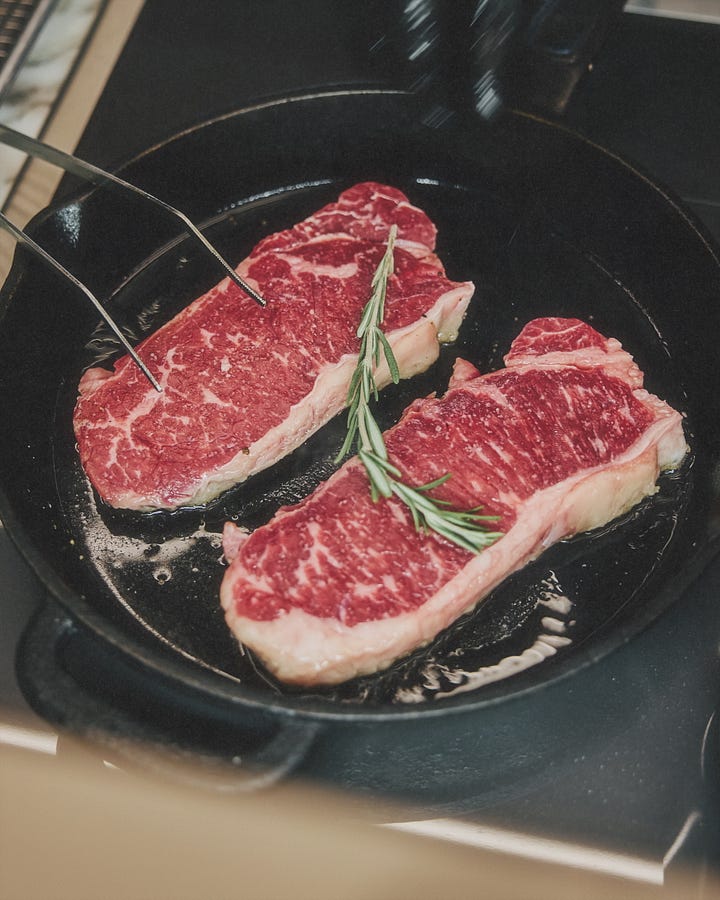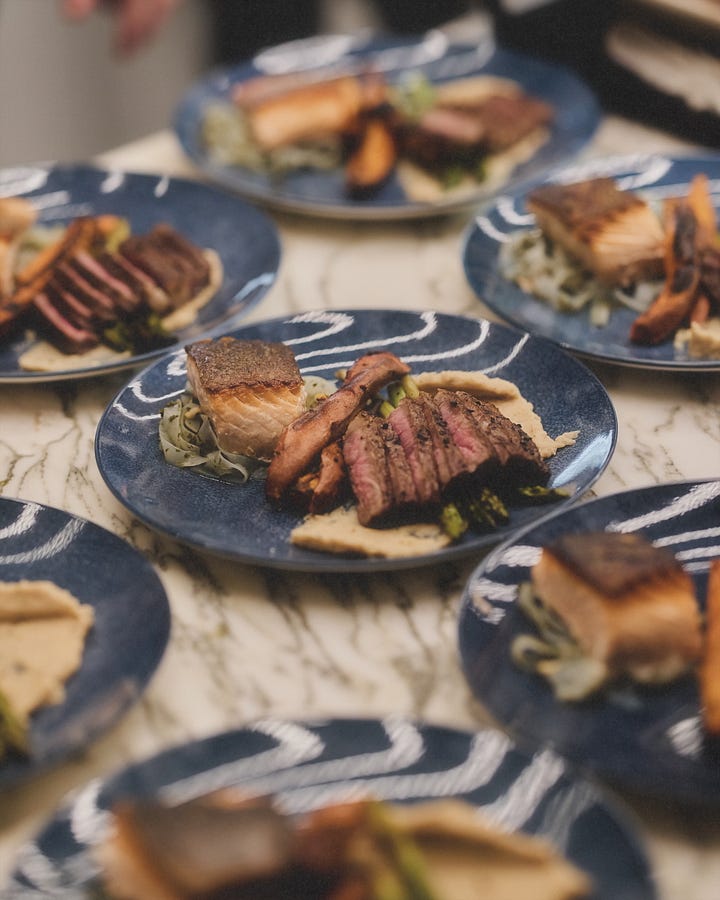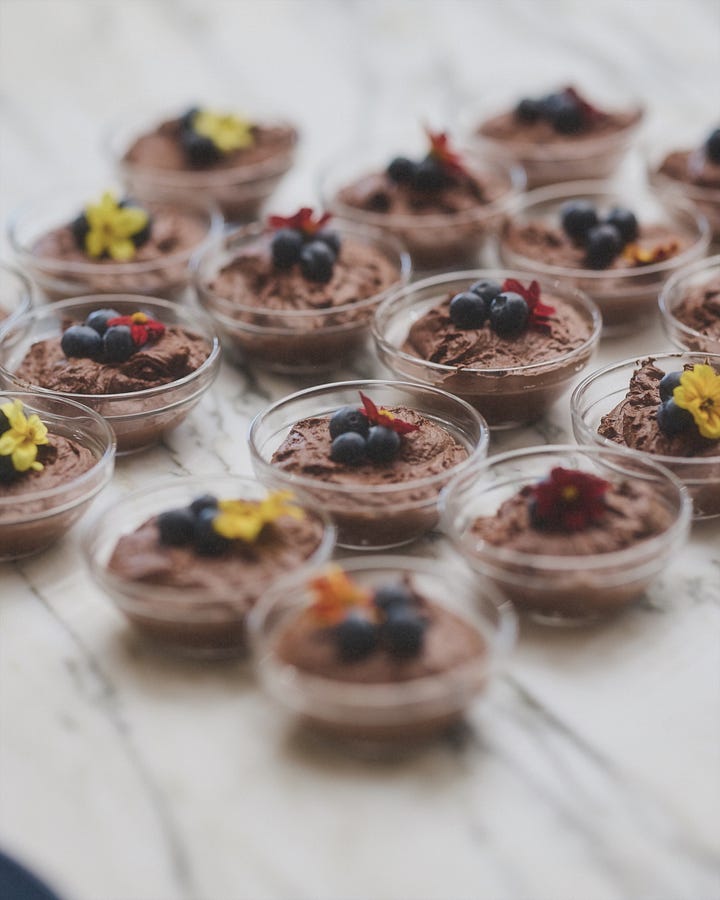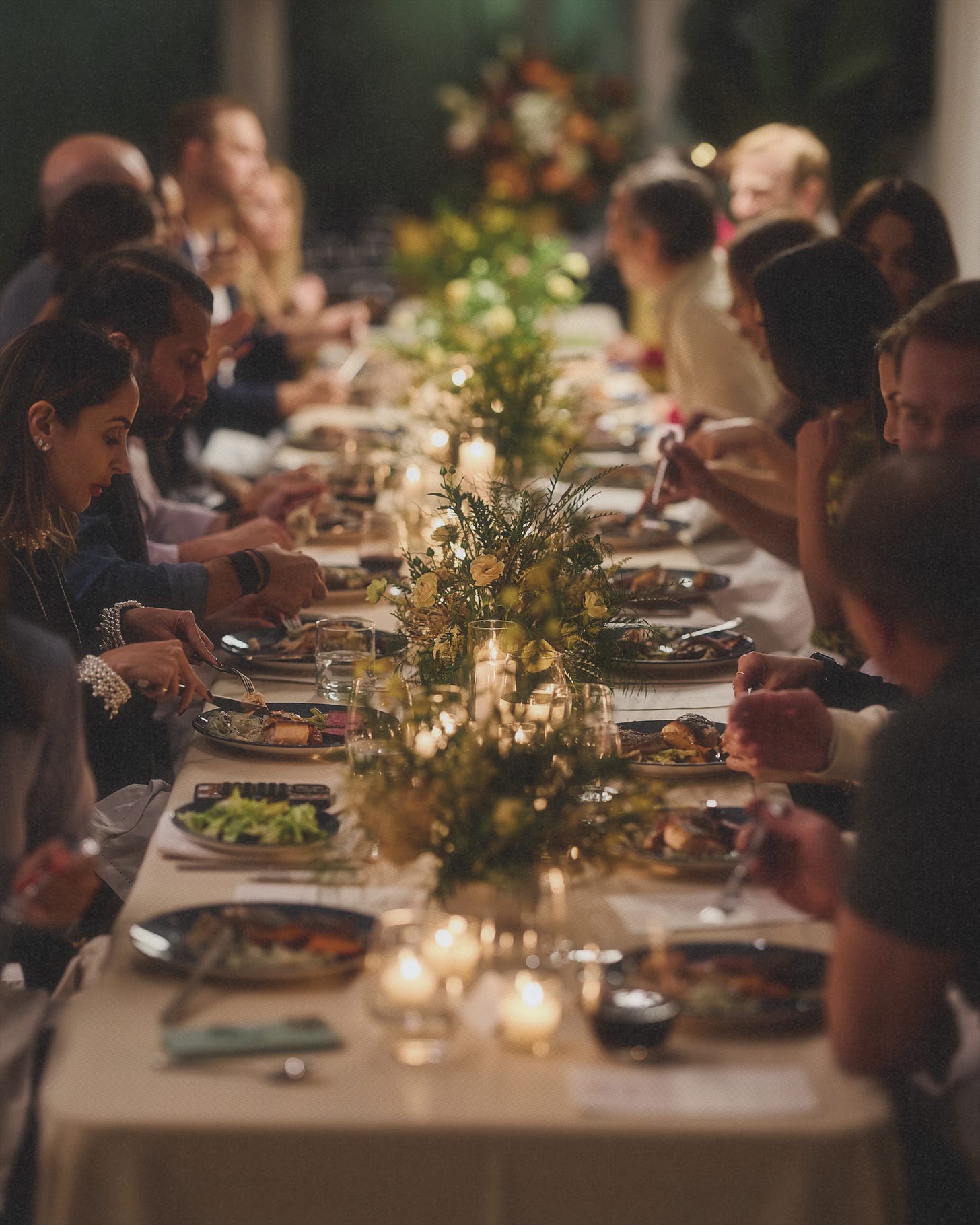I didn’t become truly aware of what I was putting into my body—what I was consuming daily and how it impacted my energy, mental health, ability to focus, and overall well-being—until my mid-20s. My parents, like many, weren’t educated early on the long-term health risks of fast food, frozen dinners, sugary “juices,” and cellophane-wrapped cakes—and they all became regular menu items. These foods were more than just treats; they were staples in my childhood. tied to nostalgic memories and everyday life.
When I graduated from college and started working full-time on Wall Street, my perception of what was “normal” when it came to food was reinforced by the culture on the sales and trading floor. Every morning, I was greeted by an industrial-sized garbage bin filled with all the hottest beverages—Snapples, Vitaminwaters, Starbucks Frappuccinos, Mountain Dews, Coca-Colas—you name it. The unspoken rule was to grab at least four of your favorites to line up at your desk for consumption throughout the day. Weekly team lunches were cheesesteaks, McDonald’s, fried chicken—you get the idea.
This was my diet. Not because I was rebelling against healthy habits, but simply because I didn’t know any different. And when you’re surrounded by smart, accomplished people who are eating the same way, it feels not just normal but socially acceptable. These habits carried me from childhood into early adulthood, supported by my environment both at work and at home.
The Wake-Up Call That Changed Everything
It wasn’t until I was 27, experiencing extreme fatigue, that I saw a doctor who suggested blood tests to uncover the root cause. The results were alarming—my A1C levels indicated I was in the pre-diabetic range. I realized something was seriously off. My doctor referred me to a nutritionist, marking the official start of my wellness journey.
At my first appointment, we reviewed my daily eating habits, did comprehensive blood work, and measured everything from nutrient levels to body composition. I left with a detailed list of foods to avoid, including some surprising ones like certain fruits and vegetables high in sugar or carbs. This wasn’t just a diet; it was a complete overhaul of how I thought about food.
Through IgG testing (short for Immunoglobulin G testing), I discovered I had an inflammatory intolerance to dairy. This test measures delayed immune responses to specific foods, helping identify intolerances that might not cause immediate allergic reactions but can lead to chronic inflammation over time. After cutting dairy out for just six weeks, the eczema I’d struggled with since childhood—which I’d been treating with steroid creams—disappeared and never came back. Reducing sugar, processed foods, and fried foods eliminated my persistent bloating and even cleared up what I had thought was hereditary hormonal acne.
Sharing the Knowledge
A few weeks ago, I shared this story with friends from my YPO community during a dinner I co-hosted with Mona Vand, a nutrition and natural wellness expert. Mona has been hosting her clean dinner series in different homes and restaurants, educating people on the hidden dangers lurking in commonly consumed ingredients and the realities of farming and harvesting practices. But she does it in a way that isn’t scary or confusing. Her real purpose is to share in the joy of clean eating and show that you can still indulge in delicious meals (and desserts!).
Hearing Mona’s insights about clean eating—especially how to do it without sacrificing the joy of food—was eye-opening. I realized that while I’d made strides in my wellness journey, there was still so much more to learn.
What I Learned (and Wish I’d Known Sooner)
Before that dinner, I thought I had a decent understanding of healthy eating. For example, I always assumed that “grass-fed” beef was the gold standard. But Mona explained how misleading that label can be. Grass-fed simply means the animal has eaten grass at some point, but it doesn’t mean it’s been exclusively grass-fed. Often, these animals are still fed GMO corn and grains, with just enough grass in their diet to earn the label. On the other hand, grass-finished beef (sometimes known as pasture-based beef) comes from cattle that have eaten only grass and forage their entire lives. This is linked to several health benefits: leading to:
A healthier ratio of omega-3 to omega-6 fatty acids, reducing inflammation.
Higher levels of conjugated linoleic acid (CLA), which is linked to better immune function and heart health.
Fewer contaminants and no exposure to grain-fed antibiotics used to prevent disease in factory-farmed animals.
We also talked about the difference between pasture-raised and free-range when it comes to poultry and eggs. While free-range sounds great, it often means the animals had minimal outdoor access—sometimes just a small door leading to a concrete slab. Pasture-raised birds, however, spend most of their lives outdoors, foraging naturally, which results in:
More nutrient-dense eggs and meat.
Higher levels of vitamin D, thanks to outdoor exposure.
A more humane and sustainable farming approach.
Our dinner featured a delicious menu of grass-finished, pasture-raised steak, wild-caught salmon, and roasted carrots.
Why wild-caught salmon? Because farmed salmon—one of the most commonly consumed fish—is often raised in overcrowded pens, fed unnatural diets, and exposed to antibiotics and synthetic colorings to enhance their pink hue. Wild-caught salmon, however:
Contains higher relative levels of omega-3 fatty acids, which support brain and heart health.
Has fewer contaminants like PCBs and heavy metals.
Offers a cleaner, richer flavor due to its natural diet (in my opinion!).


The Seed Oil Conversation
Another key takeaway was about oils. Our entire meal was prepared without seed oils, using only olive oil and avocado oil. Seed oils like soybean, canola, and sunflower are often highly processed, more frequently oxidized, and potentially inflammatory due to their relatively high omega-6 fatty acid content. While there is still some scientific debate on this topic, many health experts agree that reducing seed oils could:
Improve heart health by reducing excess omega-6 intake.
Lower inflammation from oxidation, which is linked to chronic diseases.
Support metabolic function and reduce insulin resistance.
By contrast, olive oil and avocado oil are rich in monounsaturated fats and antioxidants, making them better options for cooking and salad dressings.
A Sweet Ending (Without the Sugar Crash)
For dessert, we enjoyed a surprisingly decadent, sugar-free “chocolate pudding” made from avocado, pure cocoa, and lightly sweetened with honey. As someone with a sweet tooth, I appreciated how satisfying it was without relying on processed sugar or heavy dairy. It’s now one of my go-to recipes when I want a treat that doesn’t derail my health goals.


My Wellness Philosophy Today
While I’ll never be on Mona’s level of food expertise, she left us with one simple, powerful principle:
Maximize your intake of organic whole foods, and minimize processed foods.
When you do reach for something processed, read the label carefully. Avoid products with:
Seed oils
Synthetic colors
Preservatives & fillers
High amounts of sugar and sodium
Thankfully, there are so many cleaner snack brands available today, making it easier than ever to make healthier swaps.
Final Thoughts
My wellness journey has been transformative—not just physically, but mentally and emotionally. Understanding the connection between what I eat and how I feel has empowered me to make better choices for my health, without feeling deprived.
If you’re just starting your journey, start small. Swap one processed snack for a whole-food option. Try cooking with olive oil instead of vegetable oil. Be curious about where your food comes from.
Every small change adds up, and your body will thank you for it.







Thanks for weighing in, Jamie! I'm not too familiar with the nutrition telehealth space but I'm glad to know easy access to this type of education is expanding. Glad you found the piece helpful!!
so so so informative, thank you! the growing area of nutrition telehealth is also making it easier for people to access education around food and managing overall wellness. hopefully that will bring people much of the clarity you experienced but is often hard to find in our healthcare system ❤️